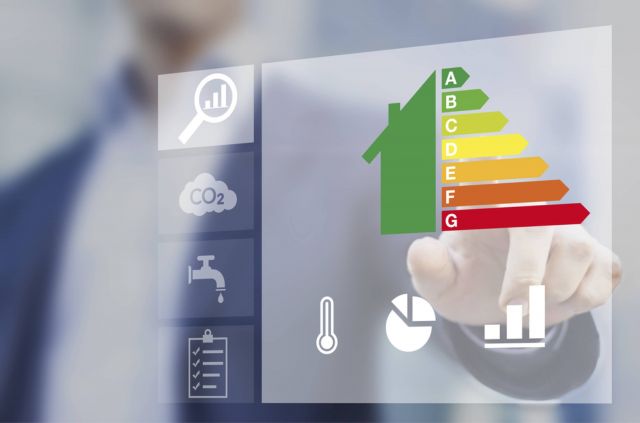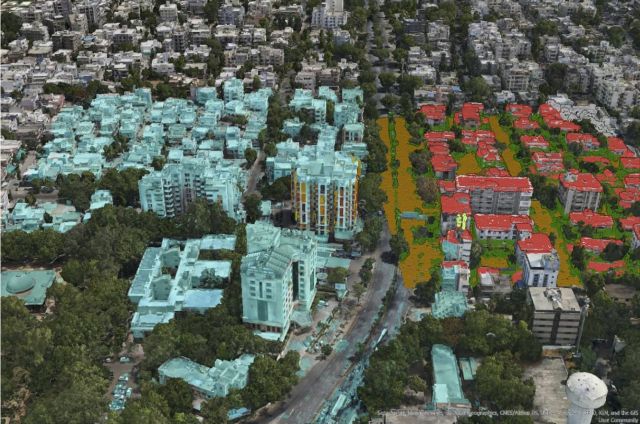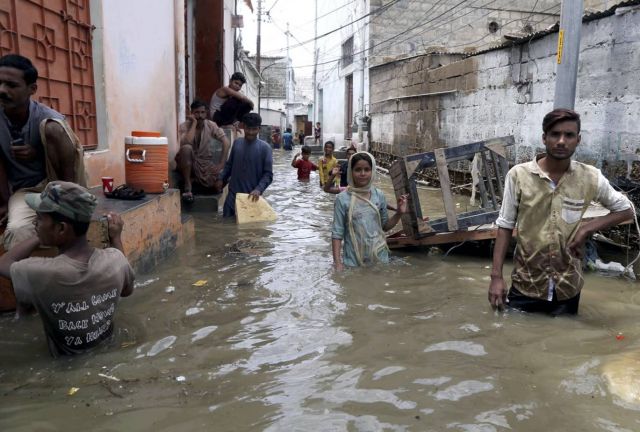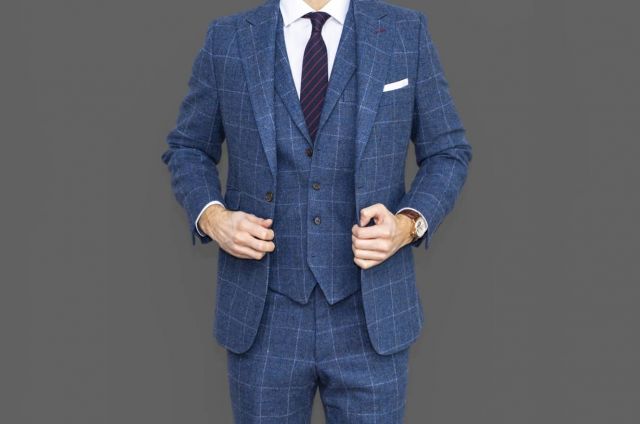Commentaries

Why co-creation is needed for SHT: to address diverse household needs & practices
Sylvia Breukers (Duneworks) comments on the Buildings & Cities special issue 'Energy, Emerging Technologies and Gender in Homes'. Who (and what) needs Smart Home Technology (SHT) and for what purposes? What are the ideas, expectations and promises behind SHT and how do these correspond to actual (gendered) experiences?

How can the energy transition and smart technologies become more inclusive?
Sarah Darby (University of Oxford) responds to the Buildings & Cities special issue 'Energy, Emerging Technologies and Gender in Homes'. If the adoption and use of smart home technologies and decarbonised energy systems are to be realised, then the principles of fairness, caring and caring ethics need to be embedded within regulatory, industry and domestic decisions and practices.

A home's adaptive capacity supports an individual's and a community's resilience when faced with different life events and their associated disruptions and consequences.
Frances Holliss (London Metropolitan University) comments on the special issue 'Housing Adaptability'. She identifies two papers making outstanding contributions to the field and explains why they advance the incorporation of flexibility and adaptability into the design of dwellings.

By Sergio Altomonte (Université catholique de Louvain) & Carlo Altomonte (Bocconi University)
What immediate and deep climate actions can be made in the slow-moving built environment? One significant action will be to rethink the standards and delivery of personal comfort. This radical shift could be done swiftly and effectively by both top-down and bottom-up actions.

A rethink is called for how building data is modelled and the purposes simulation is used for. Better to use models for design decisions than validating compliance?
Michael Donn (Victoria University Wellington) asks: What are appropriate roles and uses for building performance models? What would be better goals and uses for models and the data they generate?

Another declaration has been announced - this one linking SDGs to architecture and planning. With so many criteria, can it achieve its ambitions?
The San Marino Declaration (SMD) is an attempt to harness the UN's Sustainable Development Goals for built environment professionals and key stakeholders. Cem Kayatekin (IE University) considers whether this Declaration can achieve its many ambitions and what's missing.

What have we learned and gained from the 2022 Video Challenge?
Raymond J. Cole (University of British Columbia) reflects on the recent PhD Video Challenge and considers its wider benefits to doctoral students, the built environment community and wider civil society. It provides a valuable new path by which building-related research can be made accessible to a broad audience and a means by which PhD students can gain wide exposure of their research. Significantly, the Challenge also conveys a positive message about the research community by demonstrating how researchers strive to enhance the public's lived experience.

Why society needs a critical approach to Modern Methods of Construction and technological innovation
Fred Sherratt (University of Colorado) responds to the recent Buildings & Cities special issue 'Modern Methods of Construction: Beyond Productivity'. It is easy to be beguiled by the promise of new technologies and the notions of 'technological progress'. However, an essential role for the research community is to critically and robustly explore the consequences of new technologies for their potential impacts. Does the technology even deliver what it promises? These questions deserve societal discussion.

Can government and industry work together to develop policies and roadmaps for adopting emerging technologies?
Gerard de Valence (University of Technology Sydney) responds to the recent Buildings & Cities special issue 'Modern Methods of Construction: Beyond Productivity Improvement'. Since the middle of the 20th century offsite manufacturing, modular and prefabricated buildings have been transforming construction like nuclear fusion has been transforming energy. MMC have a dismal track record due to the brutal economies of scale and scope in a project-based, geographically dispersed industry subject to extreme swings in demand. Despite all efforts MMC has not delivered a decisive advantage over onsite production for the great majority of projects. Instead, construction has a deep, diverse and specialised value chain that resists integration because it is flexible and adapted to economic variability.

How might you choose an appropriate publisher and manage the processes involved in creating an academic book?
Architect and author Richard J Goy has published 8 books over 35+ years as well as numerous academic papers. Reflecting on his own experiences, he offers some advice to new authors planning to publish books about architecture and building.

By Kareem Buyana (Makerere University)
Financial instruments and valuation techniques and have been developed over the last decade to convert cities' low-carbon qualities and risks into new asset classes. However, the consequences of the financialisation of urban climate action are not well understood. Policy responses to these financial practices and their urban climate change transformations are too limited. COP27 urgently needs to develop a wider range of climate finance mechanisms for bottom-up practices.

By Rajan Rawal (CEPT University)
Cities are the cradle of civilizations and crucial to human endeavour. To ensure long-term resilience, urgent climate change mitigation and adaptation actions by cities need to address both physical and socio-economic planning with specific cultural contexts. The experiences of two Indian cities, Ahmedabad and Chennai, show how local actions can help nations to meet the challenges of development and climate change.

By Mahendra Gooroochurn (University of Mauritius)
COP27 has special significance for the African continent which has the lowest carbon emissions and is predicted to have high economic growth over the next decade. For this growth to take a different, more sustainable path, it is crucial to involve and empower local communities in decision-making and delivery. Grassroots level actions can help to deliver climate solutions.

By Liane Thuvander (Chalmers University) and Heba A.E.E. Khalil (Cairo University)
For COP27 to be a turning point in climate change action, it needs to pave the way for local projects and programs to proliferate. This may be most effectively achieved by establishing frameworks for context specific governance on multi-levels. How multi-level governance can support climate policy and what is needed to implement it effectively is shown. Two very different contexts demonstrate how climate governance acts at a city scale: Gothenburg, Sweden and Giza, Egypt.

In the face of imminent climate change, how can we rebuild in a more sustainable and resilient way?
In Pakistan, the climate crisis has already led to new heights of destruction, with more than 33 million people affected by intense flooding since July 2022 and approximately two million houses damaged. This poses an opportunity to reconsider conventional building practices. Rihab Khalid (University of Cambridge) highlights three critical areas for future resilient and sustainable building design in Pakistan.

Concrete has high environmental impacts. Can the construction industry reduce the volume of concrete that is used?
Can a world without concrete exist? Lola Ben-Alon (Columbia University) offers a lexicon of a myriad of concrete possibilities and questions where these materials stand in the hierarchy of decarbonising the built environment.

In the context of the climate and energy crises, clothing can reduce the energy demand associated with thermal comfort.
Alongside personal comfort systems (PCS) devices, clothing is another key site for (re)design in a body-centred personal comfort paradigm. Janine Morley (Lancaster University) explains how clothing and PCS could transform how thermal comfort is achieved whilst delivering energy savings and, potentially, increased satisfaction.

Could a focus on city dwellers to reduce individual emissions - personal carbon allowances - have value in meeting city Net Zero targets?
Many cities throughout the world have set carbon and / or energy targets including renewable energy production and emissions reduction goals. Despite the commitment to take action, cities do not directly control the majority of the uses of energy or consumption-related sources of carbon emissions within their boundaries. Could a focus on household energy use, personal travel and consumption of material goods help to achieve this transition at city level? Tina Fawcett (University of Oxford), Kerry Constabile (University of Oxford) and Yael Parag (Reichman University) consider whether and how cities could harness personal carbon allowances in a practical manner.

What works: this Swiss programme shows how a long-term, consistent approach by government and other stakeholders created a successful transition for construction SMEs. It could be adapted for a low-carbon transition.
The former Swiss 'Impulse programme' was a successful response to the 1970s energy crisis. It provides important lessons for today's climate emergency about what governments, industry and academia can do to create a successful transition within the construction industry. Niklaus Kohler and Kurt Meier (both former members of the Construction and Energy Impulse programmes) reflect on key lessons for today about its implementation and how to sustain change over the short and long term.

Presentations, performances, debates and exhibitions provide a positive message about embracing change in the built environment.
The first annual festival of the New European Bauhaus - a cultural initiative of Ursula von der Leyen (President of the European Commission) - took place in Brussels 9 - 12 June 2022. This ambitious programme and its recent festival recognises the built environment's centrality to creating climate neutrality, quality of life and social equity. Matti Kuittinen (Aalto University, coordinator of the Nordic Bauhaus programme) reflects on the festival, summarises its takeaways and applauds the mainstreaming of the New European Bauhaus.
Latest Peer-Reviewed Journal Content
Living labs: epistemic modelling, temporariness and land value
J Clossick, T Khonsari & U Steven
Co-creating interventions to prevent mosquito-borne disease transmission in hospitals
O Sloan Wood, E Lupenza, D M Agnello, J B Knudsen, M Msellem, K L Schiøler & F Saleh
Circularity at the neighbourhood scale: co-creative living lab lessons
J Honsa, A Versele, T Van de Kerckhove & C Piccardo
Positive energy districts and energy communities: how living labs create value
E Malakhatka, O Shafqat, A Sandoff & L Thuvander
Built environment governance and professionalism: the end of laissez-faire (again)
S Foxell
Co-creating justice in housing energy transitions through energy living labs
D Ricci, C Leiwakabessy, S van Wieringen, P de Koning & T Konstantinou
HVAC characterisation of existing Canadian buildings for decarbonisation retrofit identification
J Adebisi & J J McArthur
Simulation and the building performance gap [editorial]
M Donn
Developing criteria for effective building-sector commitments in nationally determined contributions
P Graham, K McFarlane & M Taheri
Reimagining circularity: actions for optimising the use of existing buildings
R Lundgren, R Kyrö, S Toivonen & L Tähtinen
Effective interdisciplinary stakeholder engagement in net zero building design
S Vakeva-Baird, F Tahmasebi, JJ Williams & D Mumovic
Metrics for building component disassembly potential: a practical framework
H Järvelä, A Lehto, T Pirilä & M Kuittinen
The unfitness of dwellings: why spatial and conceptual boundaries matter
E Nisonen, D Milián Bernal & S Pelsmakers
Environmental variables and air quality: implications for planning and public health
H Itzhak-Ben-Shalom, T Saroglou, V Multanen, A Vanunu, A Karnieli, D Katoshevski, N Davidovitch & I A Meir
Exploring diverse drivers behind hybrid heating solutions
S Kilpeläinen, S Pelsmakers, R Castaño-Rosa & M-S Miettinen
Urban rooms and the expanded ecology of urban living labs
E Akbil & C Butterworth
Living with extreme heat: perceptions and experiences
L King & C Demski
A systemic decision-making model for energy retrofits
C Schünemann, M Dshemuchadse & S Scherbaum
Modelling site-specific outdoor temperature for buildings in urban environments
K Cebrat, J Narożny, M Baborska-Narożny & M Smektała
Understanding shading through home-use experience, measurement and modelling
M Baborska-Narożny, K Bandurski, & M Grudzińska
Building performance simulation for sensemaking in architectural pedagogy
M Bohm
Beyond the building: governance challenges in social housing retrofit
H Charles
Heat stress in social housing districts: tree cover–built form interaction
C Lopez-Ordoñez, E Garcia-Nevado, H Coch & M Morganti
An observational analysis of shade-related pedestrian activity
M Levenson, D Pearlmutter & O Aleksandrowicz
Learning to sail a building: a people-first approach to retrofit
B Bordass, R Pender, K Steele & A Graham
Market transformations: gas conversion as a blueprint for net zero retrofit
A Gillich
Resistance against zero-emission neighbourhood infrastructuring: key lessons from Norway
T Berker & R Woods
Megatrends and weak signals shaping future real estate
S Toivonen
A strategic niche management framework to scale deep energy retrofits
T H King & M Jemtrud
Generative AI: reconfiguring supervision and doctoral research
P Boyd & D Harding
Exploring interactions between shading and view using visual difference prediction
S Wasilewski & M Andersen
How urban green infrastructure contributes to carbon neutrality [briefing note]
R Hautamäki, L Kulmala, M Ariluoma & L Järvi
Implementing and operating net zero buildings in South Africa
R Terblanche, C May & J Steward
Quantifying inter-dwelling air exchanges during fan pressurisation tests
D Glew, F Thomas, D Miles-Shenton & J Parker
Western Asian and Northern African residential building stocks: archetype analysis
S Akin, A Eghbali, C Nwagwu & E Hertwich

Latest Commentaries
Building-Related Research: New Context, New Challenges
Raymond J. Cole (University of British Columbia) reflects on the key challenges raised in the 34 commissioned essays for Buildings & Cities 5th anniversary. Not only are key research issues identified, but the consequences of changing contexts for conducting research and tailoring its influence on society are highlighted as key areas of action.
Lessons from Disaster Recovery: Build Better Before
Mary C. Comerio (University of California, Berkeley) explains why disaster recovery must begin well before a disaster occurs. The goal is to reduce the potential for damage beforehand by making housing delivery (e.g. capabilities and the physical, technical and institutional infrastructures) both more resilient and more capable of building back after disasters.